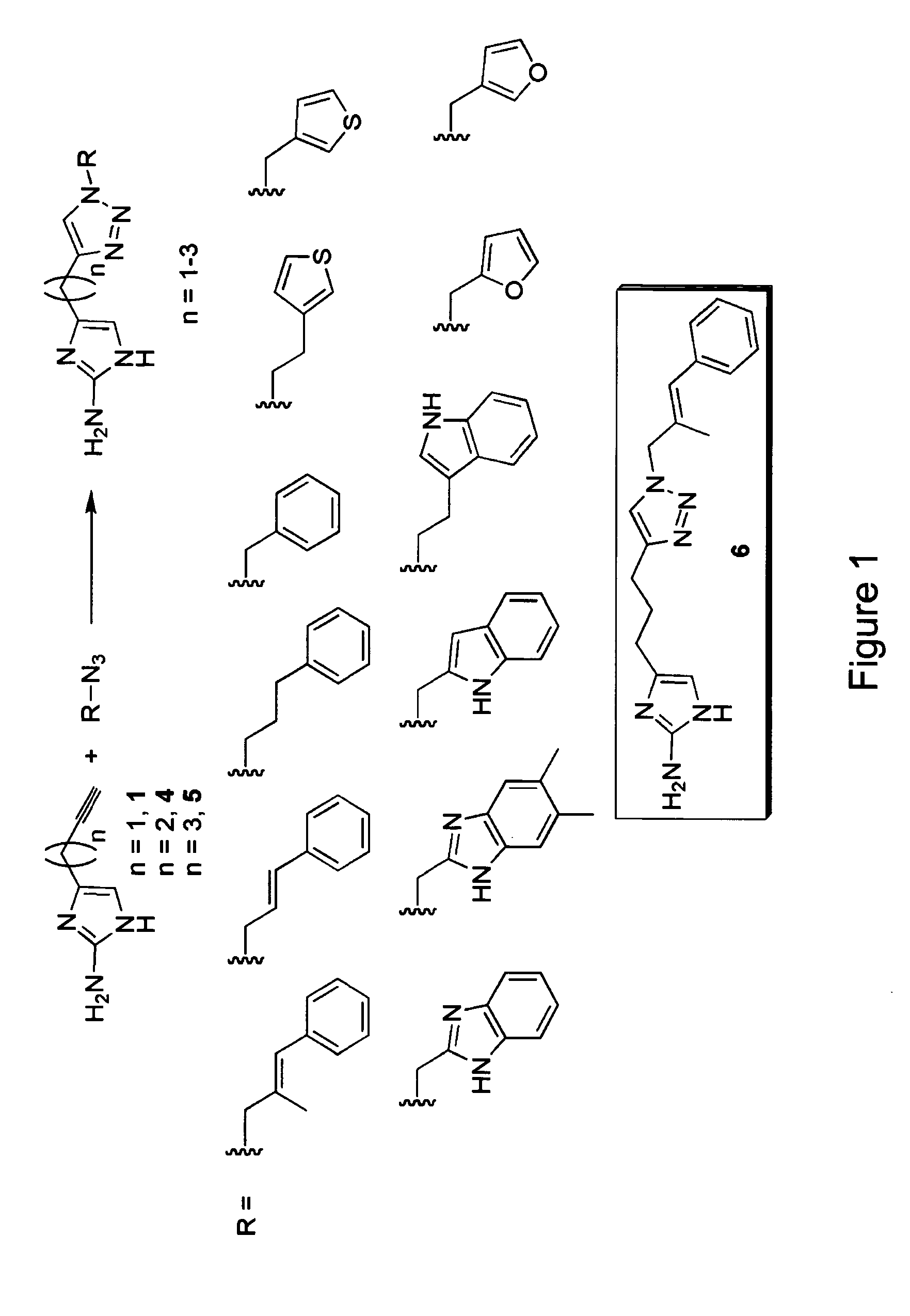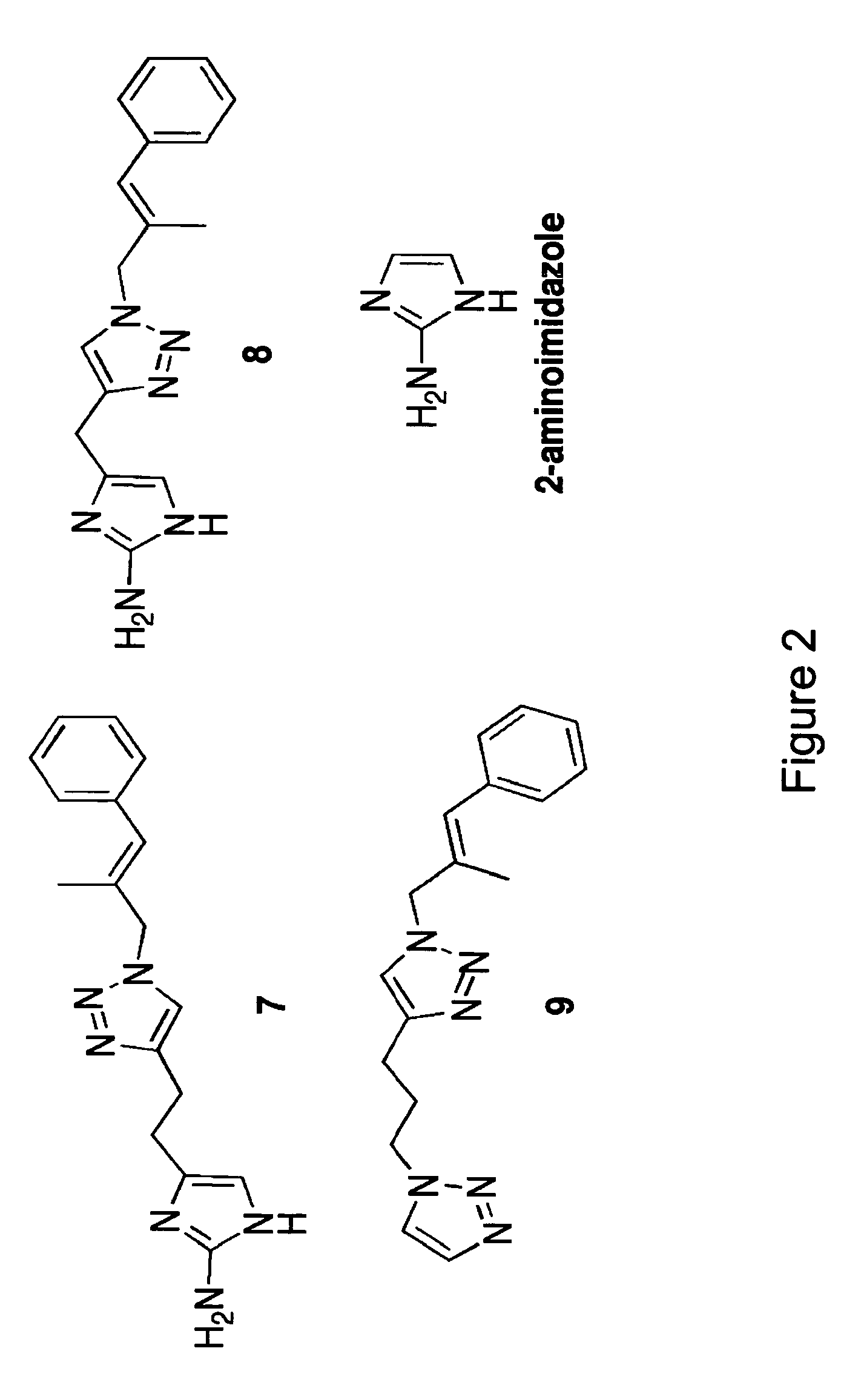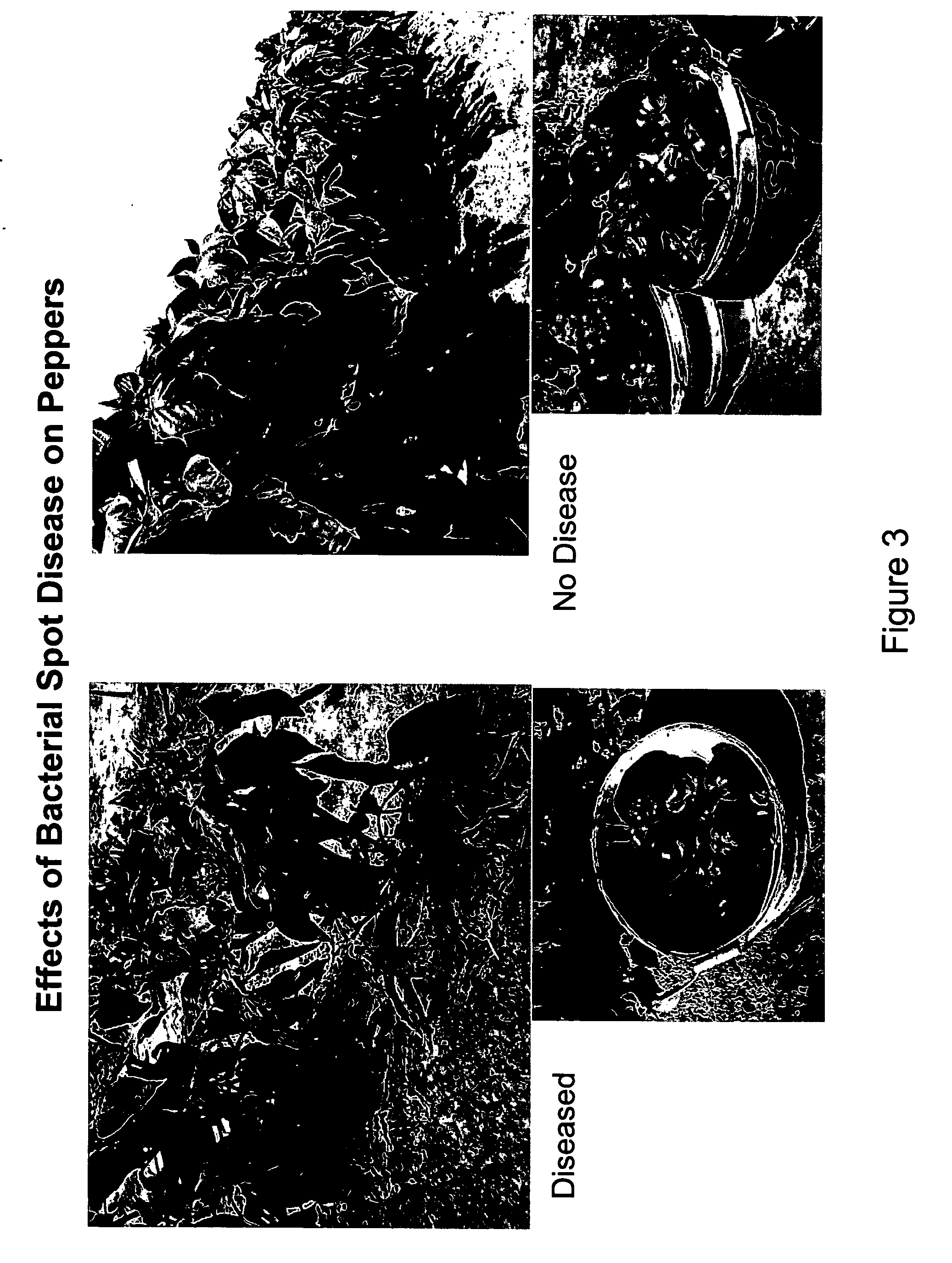Inhibition and dispersion of biofilms in plants with imidazole-triazole derivatives
- Summary
- Abstract
- Description
- Claims
- Application Information
AI Technical Summary
Benefits of technology
Problems solved by technology
Method used
Image
Examples
example 1
Synthesis of 2-aminoimidazole-triazole (2-AIT) Chemical Library
[0334]There is a paucity of reactions that have been reported to be compatible with 2-aminoimidazoles. To test the applicability of the Cu(I)-catalyzed [3+2] alkyne / azide cycloaddition (Click reaction, see Kolb et al., Angewandte Chemie-International Edition 2001, 11, 2004-2021; Rodionov et al., Angewandte Chemie-International Edition 2005, 15, 2210-2215), we synthesized the alkyne derived 2-aminoimidzole 1 and tested its ability to participate in a Cu(I)-catalyzed [3+2] cycloaddition with benzyl azide.
[0335]The alkyne derived 2-aminoimidazole (2-AI) was synthesized as outlined in Scheme 1. Amino acid 2 (Kotha et al., Tetrahedron 2002, 45, 9203-9208) was subjected to small scale Akabori reduction (Akabori, Berichte Der Deutschen Chemischen Gesellschaft 1933, 66, 151-158), which, followed by condensation with cyanamide (Xu Yz et al., J Org Chem 1997, 3, 456-464) delivered the target alkyne 2-AI 1 in 88% yield. With 1 in h...
example 2
Activity Testing of 2-AIT Library Members
[0392]A standard crystal violet reporter assay is employed to assess the effect of compounds from the 2-amino on the formation of biofilms. Among others, the following strains are tested:
[0393]Xanthomonas Xccl
[0394]Xanthomonas Xcv.135
[0395]Xanthomonas Xcv5
[0396]Xanthomonas Xccp
[0397]Xanthomonas Xcp60
[0398]Xanthomonas Xcp25
[0399]Ralstonia solanacearum K66
Xanthomonas is a Gram-negative rod-shaped bacterium that is a common plant pathogen. Xanthomonas bacteria grow almost exclusively in plants. Xanthomonas species testing includes X. vesicatoria (crop=tomato), X. euvesicatoria (crop=pepper), X. campestris (crop=crucifers, particularly cabbage), X. zinniae (crop=zinnia), and X. fragariae (crop=strawberry). Ralstonia solanacearum is a Gram-negative bacterium that is found in soil.
[0400]Bacteria are allowed to form biofilms in a multi-well plate in the absence or presence of one or more compounds. Planktonic (or free growing) bacteria are then remo...
example 3
Activity Testing of 2-AIT Library Members on Xanthomonas
[0401]Biofilm formation on PVC microtiter wells was accomplished using Xanthomonas strains Xcv 135 (known to infect peppers and tomatoes) and Xcv 5 (known to infect tomatoes but not peppers) as models. The Starting Optical Density (OD at 600 nm) for biofilm attachment assay was 0.55, the temperature for this assay was 28° C., the duration of incubation was 6 hours under, and the assay was static.
[0402]Biofilm inhibition results are as follows for screens with Xcv 135. The Xcv 5 strain is tested in the same manner.
Compound Screened% Inhibition at 20 μM (vs. Xcv 135)Formula (II)(a)(5)(D)86%Formula (II)(a)(6)(D)85%Formula (II)(i)(a)(2)(J) 0%
PUM
| Property | Measurement | Unit |
|---|---|---|
| Temperature | aaaaa | aaaaa |
| Volume | aaaaa | aaaaa |
| Volume | aaaaa | aaaaa |
Abstract
Description
Claims
Application Information
 Login to View More
Login to View More - R&D
- Intellectual Property
- Life Sciences
- Materials
- Tech Scout
- Unparalleled Data Quality
- Higher Quality Content
- 60% Fewer Hallucinations
Browse by: Latest US Patents, China's latest patents, Technical Efficacy Thesaurus, Application Domain, Technology Topic, Popular Technical Reports.
© 2025 PatSnap. All rights reserved.Legal|Privacy policy|Modern Slavery Act Transparency Statement|Sitemap|About US| Contact US: help@patsnap.com



